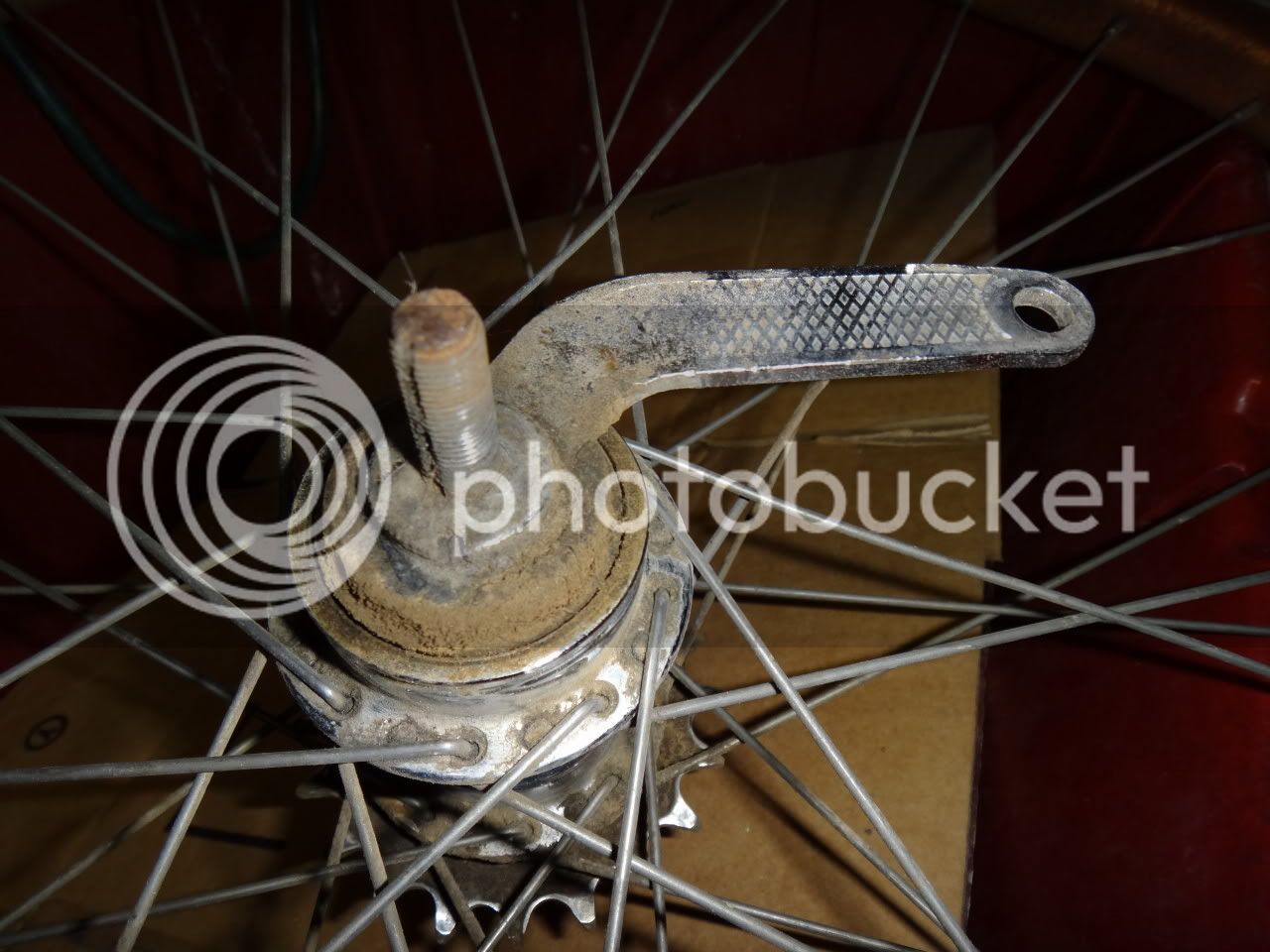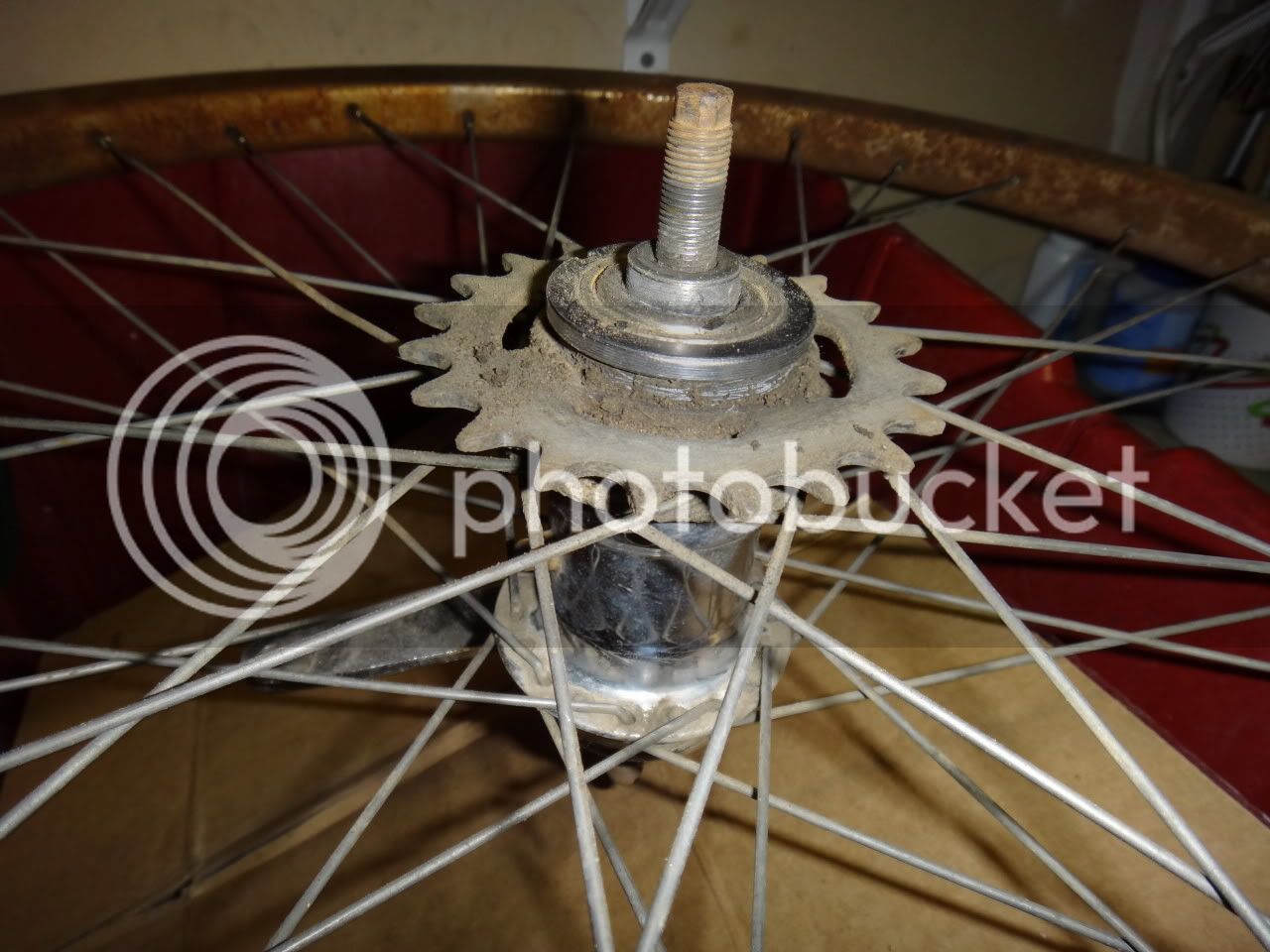Hi, first time posting here, I admire all of your creations!
I recently picked up 1950-something Ohino built AMF Shelby, and trying to work on the coaster hub as the first project. But this thing looks different from the overhaul guide in Park Tool web site. I'm wondering if anyone have any pointers (tools and things to watch out, etc) how I should tackle this crusty hub... I have pretty much all tools for post-90s bikes and components, but hardware on this bike looks very different from tools that I already have. It's a generic hub. Thanks for any inputs!


I recently picked up 1950-something Ohino built AMF Shelby, and trying to work on the coaster hub as the first project. But this thing looks different from the overhaul guide in Park Tool web site. I'm wondering if anyone have any pointers (tools and things to watch out, etc) how I should tackle this crusty hub... I have pretty much all tools for post-90s bikes and components, but hardware on this bike looks very different from tools that I already have. It's a generic hub. Thanks for any inputs!











































































